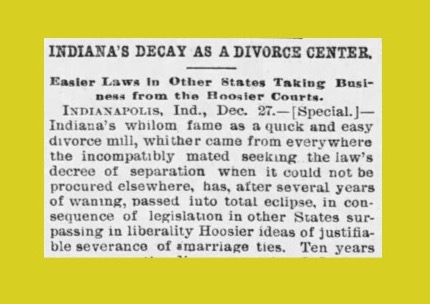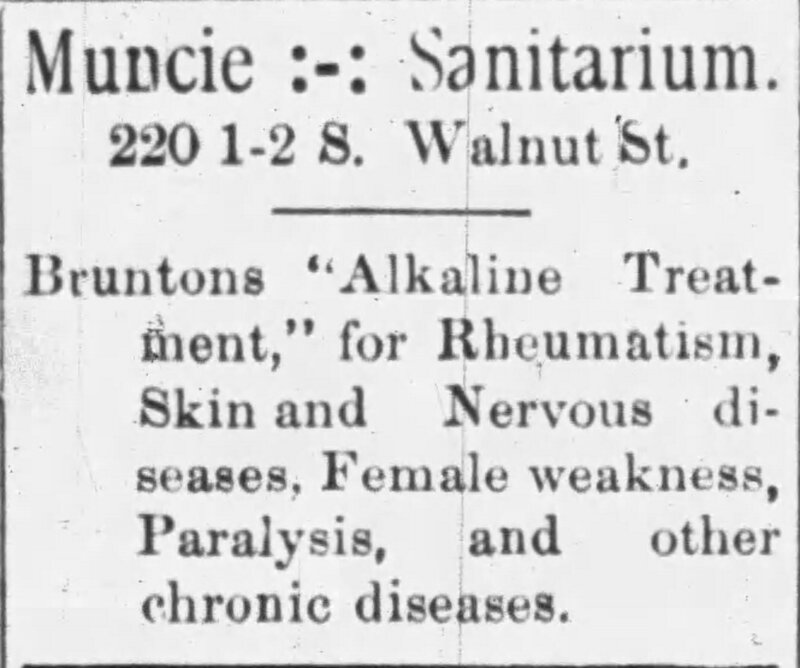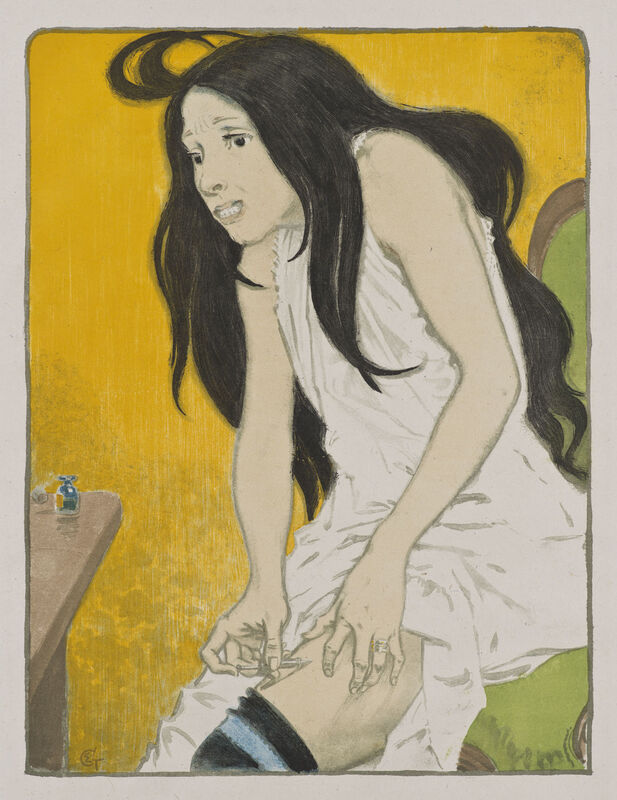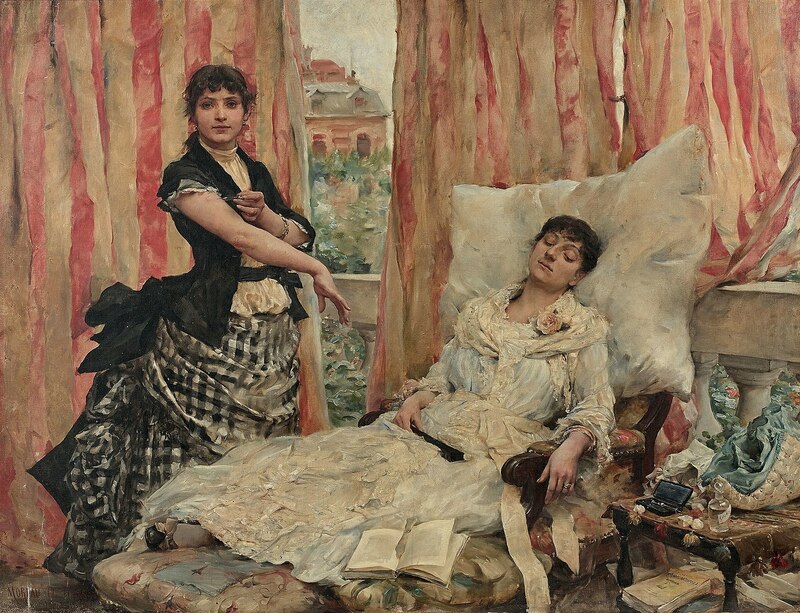Anna Oakley / Minnie Fisher
Unlike Genevieve Hanna, Minnie Fisher did not have the benefit of a stable home, widely respected parents, or a high school diploma. Historical evidence reveals that Minnie Fisher's life was difficult. We know about her because she was arrested and in turn became notorious and newsworthy. Minnie's life appears in Muncie's newspapers as a cautionary tale, a scandal, and tragedy. Sadly, the newspapers did not record moments of joy or happiness, or even the community's attempts to help her gain an education or legal employment.
This biographical video was researched and created by Magnus Alderman, Megan Halcomb, Luke Hinesley and Kaleb Wood.
Anna Oakley or Minnie Fisher? The Tragic Life of A Young Muncie Woman
Minnie Fisher's life includes several important issues, that might be considered too modern for the 1890s: divorce, drug use, sex work and mental illness. In fact these issues were widespread concerns to people at the time.
In the period after the US Civil War (1861-65), the American divorce rate began to rise. The table below uses data collected by the National Center for Health Statistics. From 1867, when data was first collected, to 1890, the divorce rate rose to 3.0 couples per 1,000 were divorced. Every twenty years the rate grew by about 75%. By 1920 the divorce rate had reached 8.0 couples per 1,000. Until 1873, Indiana had very liberal divorce laws that attracted unhappy couples from across the country. And even as other states liberalized their divorce laws, Indiana newspapers continued to list couples applying for divorces. The article below, from the Chicago Tribune in 1889 notes that every day that year a couple had filed for divorce in Indianapolis. Many more couples applied for divorces in county courts across the state. In Muncie, Minnie's mother Rosa was certainly not alone in her unhappy marriage, nor in receiving a divorce citing insufficient support and cruelty.
In addition to lamenting the number of divorces, Indiana newspapers also discussed increasing drug use. During the Civil War doctors used morphine liberally to treat wounded soldiers. In the decades that followed, doctors often prescribed morphine to women for relief from menstrual cramps and nervous ailments. The general lack of regulation resulted in broad access to morphine and other opiates via prescriptions and over the counter purchases.
Through the 1890s, physicians and middle-class women became the new addict demographics. In the early 1900s another notable woman brought these two models together. As Muncie's first female physician, Dr. Anna Lemon Griffin, fought her husband for a divorce, he accused her of morphine addiction and violence. Reports of "morphine-eaters" (or addicts) appeared in Indiana newspapers, alongside advertisements for treatment. In 1894 the Muncie Sanitarium opened on Walnut Street promising to cure "nervous diseases [and] female weakness." Articles followed that describing female patients who were released from the "bondage" of morphine addiction. Notably, the sanitarium was neighbor to several saloons and when it moved to North High Street in 1895, a drug store took its place.
In the same period, artists began portraying female morphine users, which created visual stereotypes. Grasset's lithograph (left) presents a sex worker injecting herself using a syringe. Her pained face and clutching hands suggest desperate need. There is nothing in this image to suggest wealth. The viewer is left to assume that her state of undress is related to her lifestyle or work.
The etching below, created by Paul Albert Besnard, shows another stereotype of morphine addiction. Unlike Grasset's sex worker who sits in her underclothes, these two women are wearing expensive dresses with puffy sleeves. Their clothing and languor suggest more wealth, as does the tall carafe of morphine crystals beside them. Yet their spindly hands and thin faces share a similar dark and pinched quality with Grasset's figure. Together these women captured the female spectrum of addiction.
Drug addiction was not a problem faced only by women in Muncie. The three images presented here were created by French artists in the 1880s and 1890s, when Paris was hit with an opiate epidemic that affected all classes. In the years that Minnie Fisher was arrested for associating, sat in jail, and overdosed on morphine, Parisians be came accustomed to stylized images of women reflecting some of these activities. In 1886 George Moreau de Tours exhibited the painting on the left at the Académie des Beaux-Arts Salon, where it hung for all to see. The two women depicted are set in a middle-class room that might have seemed familiar to viewers. However, the publicity that Minnie Fisher's suicide attempt attracted was the opposite of Gilded Age respectability. Her life served as a cautionary tale that was sadly familiar in Muncie and as far away as Paris.
To hear more about the historian's process and the methodologies used to research and create historical narratives, check out the conversation between Alderman, Halcomb, Hinesley and Wood below. Anna Oakley or Minnie Fisher: A Methodology Video
Minnie Fisher's conflict with society's expectations for women, is similar in some ways to Hallie Shaffer. While it is difficult to know what led to Minnie Fisher's vice activity and arrests, her early death prompts more questions about marriage as a solution to all of life's problems. American society encouraged women to seek love and marriage as a life goal, but confined their choices with specific class, gender, and race barriers. Click on Hallie Shaffer to see how one woman struggled against class expectations and Indiana's racist miscegenation laws.







